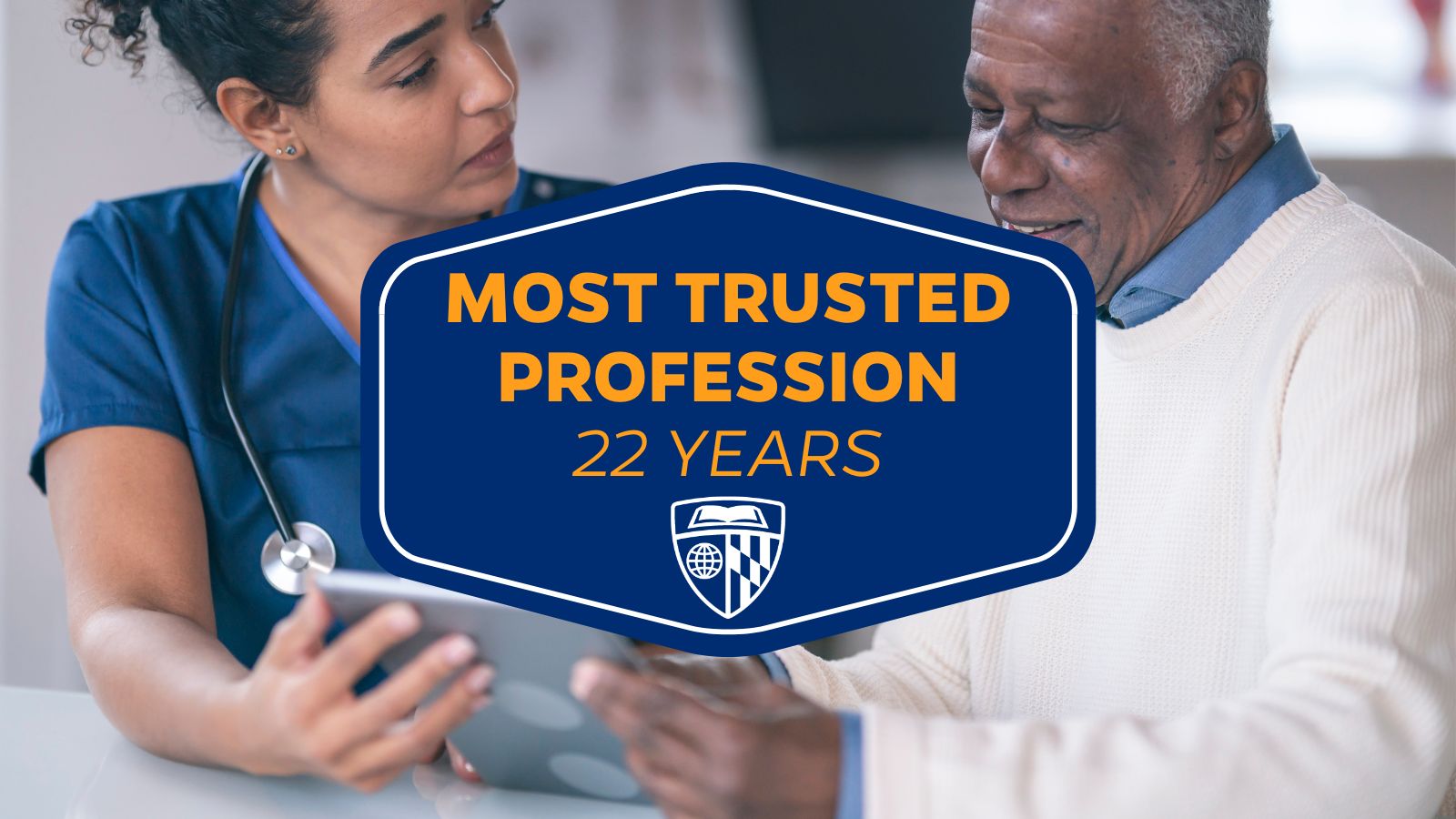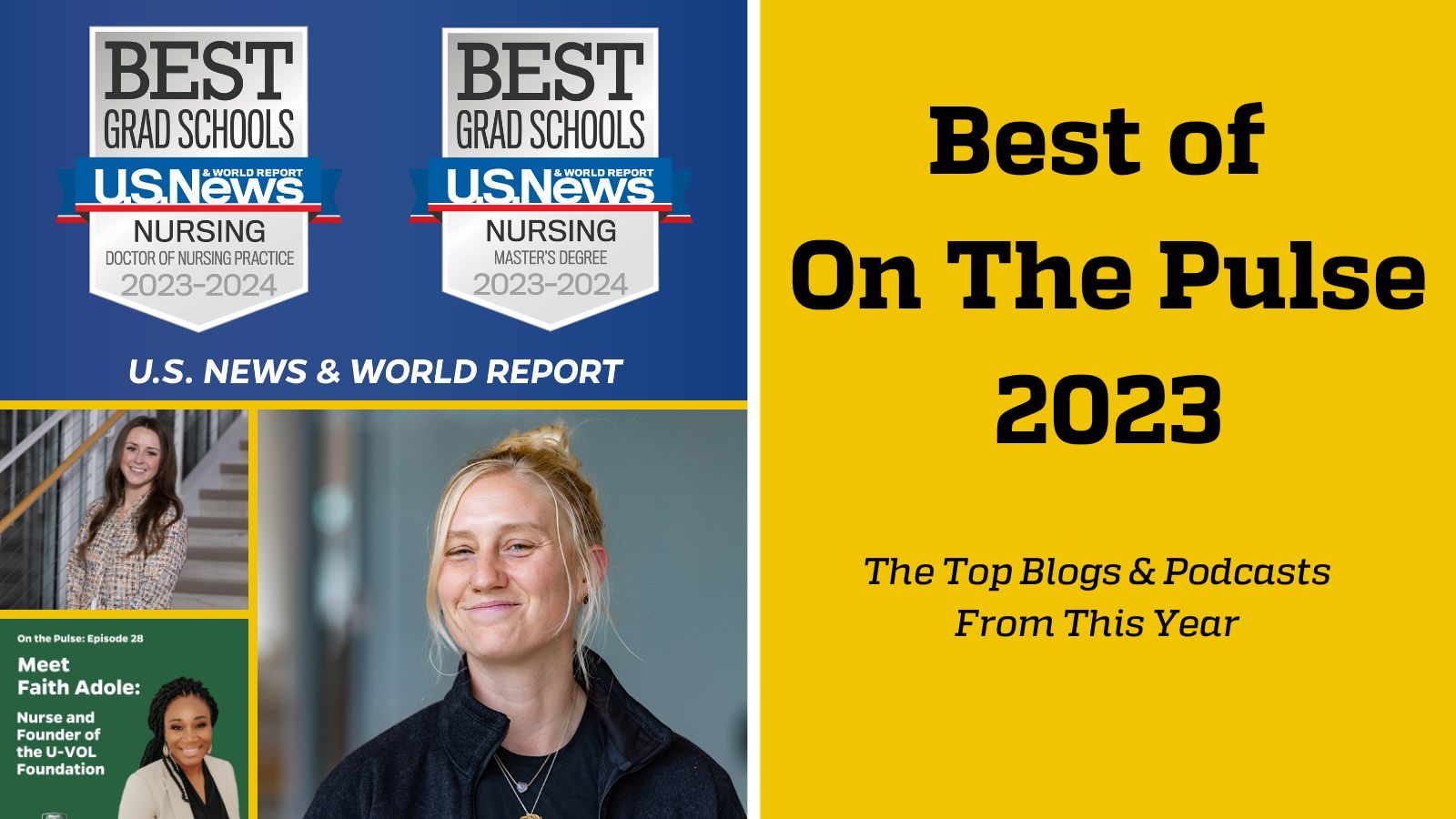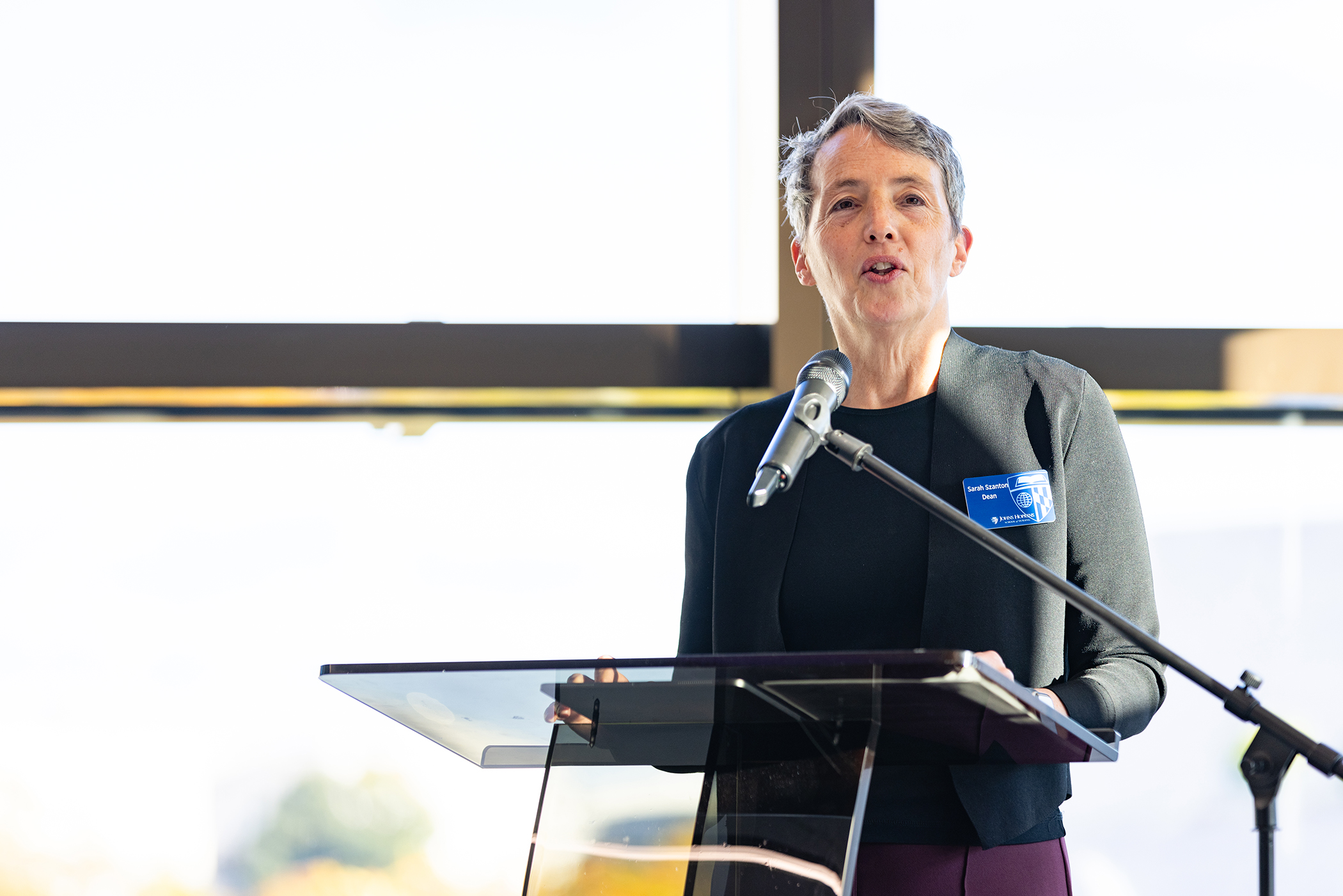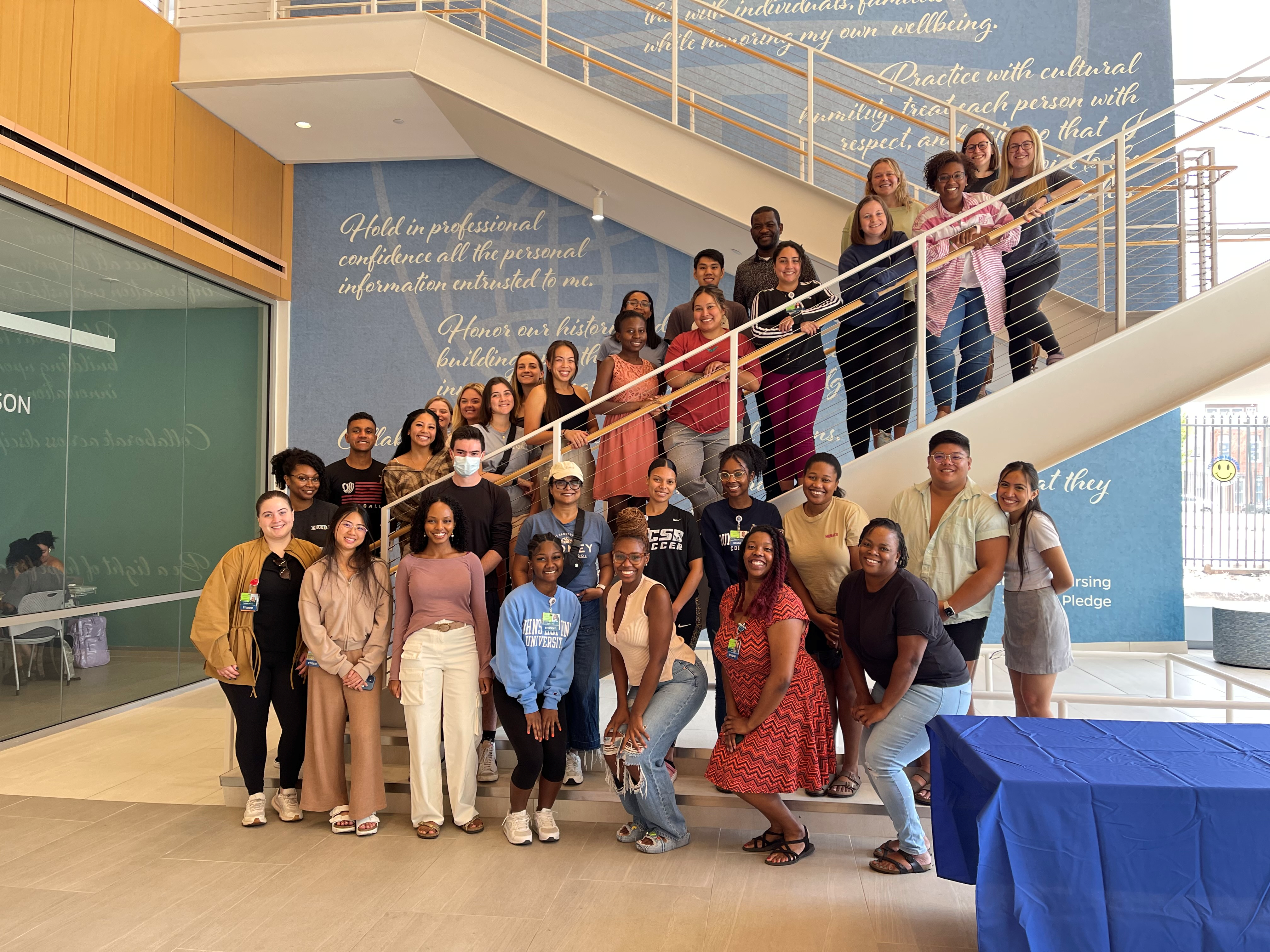“From illness focused to wellness focused; it’s like we’re flipping the health care model upside down,”
Inga Antonsdottir
Inga Antonsdottir and Chun-An Sun are fifth-year DNP/PhD candidates at the Johns Hopkins School of Nursing, with research and scholarship focused on community care.
Nurses are everywhere.
Four in 10 nurses work outside of the hospital setting. Already, health care is delivered in clinics and community health fairs; in schools, long-term care facilities, outpatient clinics and even in patients’ own homes. What’s more, in the pandemic’s wake, with more virtual care available and a greater emphasis on prevention, access to care outside of the hospital setting is only growing.
In this Q&A Inga and Chun-An talk about how they arrived at DNP/PhD research and scholarship, and the paradigm shift from illness to wellness-based care.
How did you get here?
Chun-An Sun
I was a registered nurse working on a cardiac step-down unit in Taiwan. I grew frustrated seeing the same patients returning to the hospital with the same problems, which led me to become a public health nurse. In the community you can connect with people on their turf and have tough conversations about lifestyle change and medication adherence that you just don’t have time for in an acute setting.
“I grew frustrated seeing the same patients returning to the hospital with the same problems.”
I am passionate about primary care. I earned my master’s in international health in Norway, did field work with patients with type 2 diabetes and hypoglycemia in Cambodia, traveled back to Taiwan to work as a public health nurse, and then married and came to the U.S. Now I am a DNP/PhD candidate in year five studying to become a family nurse practitioner; they don’t have the NP role in Taiwan.
Inga Antonsdottir
I love working in dementia and memory disorder care. Prior to becoming a nurse, I worked as an EMT, and working out of an ambulance, I was able to visit patients’ homes and see how people who had dementia lived—how they went about taking care of themselves and maintaining independence.
“It takes 17 years to get research into practice; as a provider and researcher I can get evidence-based care to patients sooner.”
I wanted to be a provider to care for people with dementia and Alzheimer’s as well as work towards new treatments and interventions. It takes 17 years to get research into practice. The DNP/PhD is training me to become an adult-gerontological nurse practitioner and a researcher—I can get evidence-based care to my patients sooner.
What are some of the settings and benefits of community care?
“COVID showed us we can do a lot outside of the hospital,” Inga says. “We can do a lot from the comfort of a person’s own home and tailor interventions to their lifestyle.”
“Diabetes care, for example, is so lifestyle focused,” Chun-An continues. “In the hospital setting you have a small window into a person’s life, and may make a ridiculous suggestion that doesn’t fit them at all. And there are so many barriers to a physical visit.”
“That’s the beauty of home and virtual visits,” says Inga. “There’s a different power dynamic, here were asking them to show us around instead of us telling them what to do; we’re taking their situation into context instead of the other way around.”
Other settings of community care include health fairs, schools, community health centers, and tabling at barber shops, grocery stores, gyms and more.
How is health care changing and adopting a community focus?
Inga Antonsdottir
We’re flipping the health care model upside down, from illness focus to wellness focused. We’re not solving problems on the fly, the community model aims to manage health before an acute crisis happens.
It’s also broadening the role of caregivers. Health issues aren’t just medical, it includes a holistic view of what a person or family needs and support with resource navigation—that means more community health workers without medical training.
We as health care providers have a strict view of what this patient needs, and their goal may be different. We’re shifting to help them reach their goals, but also help them understand that our goals are related.
Tell me about the COMPASS Center.
Chun-An Sun
I am a community scholar fellow for the COMPASS center. It aims to break boundaries, provide more resources, help with navigation, and wellness-based services to the community. It’s led by Dr. Hae Ra Han.
Providing Clarity on Health Care
I’ve worked with COMPASS at the House of Ruth, an intimate partner violence center, and at Wald Community Nursing Center. – Services provide through Wald Community Center, Henderson Hopkins School and the House of Ruth Health Suite are provided free of charge and focus on wellness and social determinants of health.
Learn about other COMPASS center programs:
- Community Outreach Program
- Birth Companions
- Wald Community Nursing Center
- Henderson Hopkins School
- House of Ruth Maryland
Where do we go from here?
“As a society, we’re going to spend less money at the end of life and more money preventing the problems,” says Inga Antonsdottir.


 You’re Welcome
You’re Welcome Nursing Named Most Trusted Profession for 22nd Consecutive Year
Nursing Named Most Trusted Profession for 22nd Consecutive Year Best of On The Pulse 2023
Best of On The Pulse 2023 From the Dean: Here & Now
From the Dean: Here & Now The Learning Collaborative: ‘I Think I Can, I Think I Can …’
The Learning Collaborative: ‘I Think I Can, I Think I Can …’







